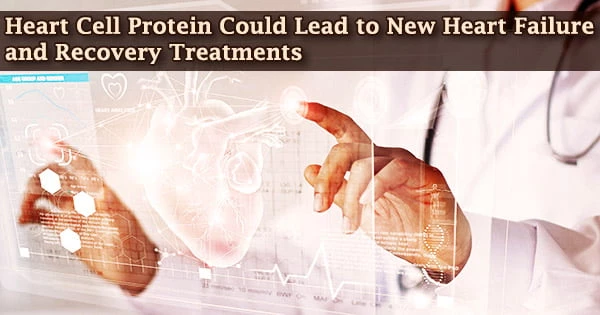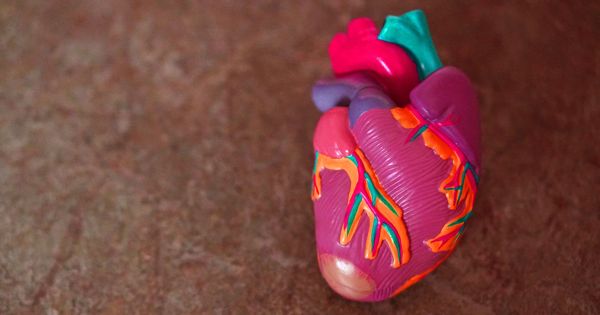According to an international study headed by University of Utah Health scientists, a protein that helps control calcium communication within heart cells could play a significant role in avoiding chronic heart failure.
The disruption of this protein’s signaling pathway, VDAC2, causes severe impairment of cardiac cell contraction, making it difficult for the heart to carry blood to the body, according to the researchers. The discovery suggests that medicines and other therapeutic treatments that target VDAC2 could assist to alleviate heart failure in the future.
“Based on our human and labratory research, it appears that If VDAC2 is not working properly, then everything in the heart can cascade downward from there,” says Stavros Drakos, Professor of Medicine, Director of Cardiovascular Research for the Division of Cardiology at U of U Health, and senior author of the study. “If we can figure out ways to help this protein do its job again, then it’s possible that we might be able to address heart failure far earlier in the disease process.”
The study appears in Nature Communications.
Calcium, the mineral that keeps your teeth and bones strong, has long been known to play an important role in the heart. Calcium levels in cardiac muscle cells (called myocytes) decrease between heartbeats, allowing the cell to relax.
The sarcoplasmic reticulum, a tiny cellular component, releases a considerable amount of calcium during contraction, causing the cell to contract. The continual ebb and flow of calcium in and out of the inner fluid of cardiac muscle cells is essential for the heart to continue to beat.
Based on our human and labratory research, it appears that If VDAC2 is not working properly, then everything in the heart can cascade downward from there. If we can figure out ways to help this protein do its job again, then it’s possible that we might be able to address heart failure far earlier in the disease process.
Stavros Drakos
Calcium is also used by an organelle called mitochondria to help make metabolic energy that keeps cells alive, according to researchers. Mitochondria communicate with the sarcoplasmic reticulum, although its involvement in calcium signaling and, as a result, cardiovascular health is unclear.
Drakos and colleagues wanted to learn more about mitochondria’s role in the calcium cycle in heart cells for their research. They discovered a favorable association between improved heart function and VDAC2 activity, a protein on the outer membrane of the mitochondria that permits calcium to pass into the mitochondria, in previous studies with human heart tissue from heart failure patients.
As a result, they hypothesized that VDAC2 might be involved in the sickness. VDAC2 was inhibited or knocked out in laboratory mice. Calcium flow in the mitochondria was greatly hampered without it, and cardiac cells were unable to beat normally.
The left ventricle, or pumping chamber, of the mice’s hearts grew larger as well. Dilated cardiomyopathy made it difficult for the heart to pump blood, eventually leading to heart failure and death.
VDAC2 interacts with a pair of proteins in the sarcoplasmic reticulum, according to the researchers. When this protein-to-protein communication is disrupted, cellular calcium signaling is disrupted, resulting in heart failure.
However, restoring VDAC2 in knock-out mice prevented death and reversed several of the symptoms of heart failure, including reduced left ventricular swelling.
The researchers discovered that an investigational medicine called efsevin, which binds to VDAC2 and promotes mitochondrial calcium uptake, improved cardiovascular health in mice with a genetic predisposition to heart failure. According to the researchers, this shows that efsevin and other VDAC2-targeting medicines are promising candidates for further testing as heart failure therapy.
“Our study shows the importance of VDAC2 in normal cardiac function,” says Thirupura Sundari Shankar, lead author of the study and a graduate PhD student in the Drakos lab. “Through this unique role, VDAC2 emerges as a potential therapeutic target for heart failure patients.”
The study, “Cardiac-specific Deletion of Voltage Dependent Anion Channel 2 Leads to Dilated Cardiomyopathy by Altering Calcium Homeostasis,” appears in Nature Communications. It was supported by the American Heart Association, the National Heart, Lung and Blood Institute, and the Nora Eccles Treadwell Foundation.
In addition to Shankar and Dr. Drakos, U of U Health researchers D.K.A. Ramadurai, S. Sommakia, R. Badolia, A.T. Krokidi, D. Calder, S. Navankasattusas, A. Aravamudhan, J. Ling, K.J. Whitehead, F.B. Sachse, K.W. Spitzer, and D. Chaudhuri contributed to this research. Collaborating institutions included the VA Salt Lake City Medical Center, University of Connecticut, University of California, Los Angeles, and Ludwig Maximilian University of Munich.
















